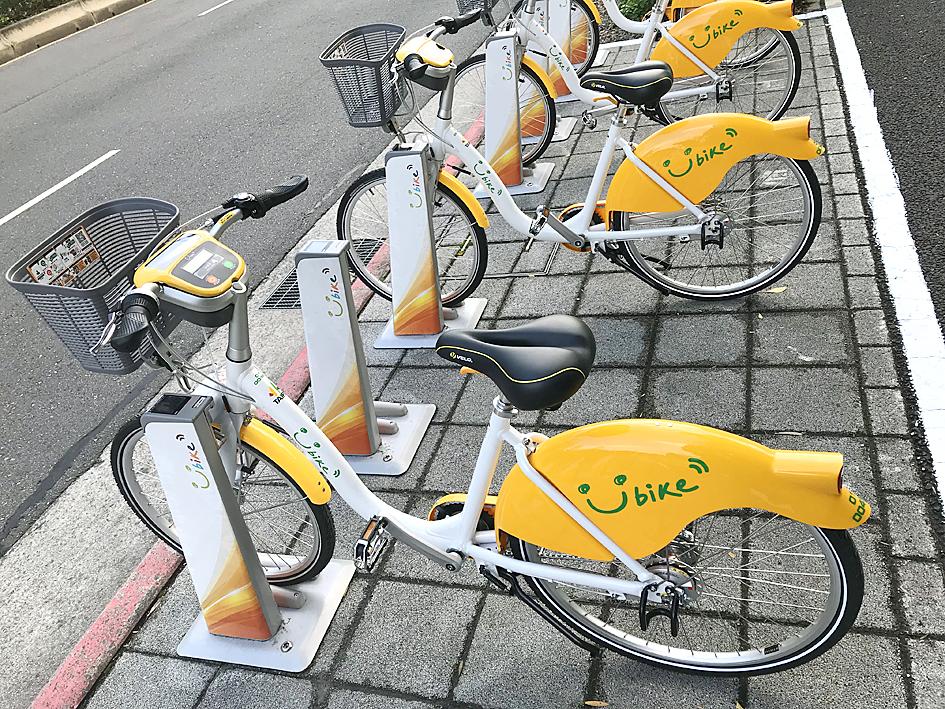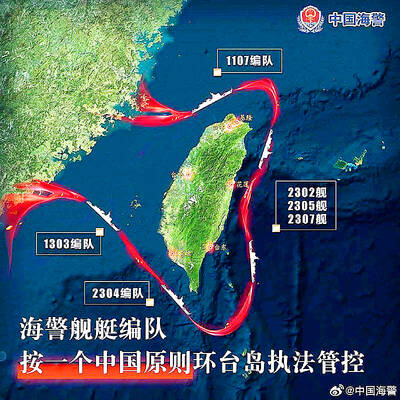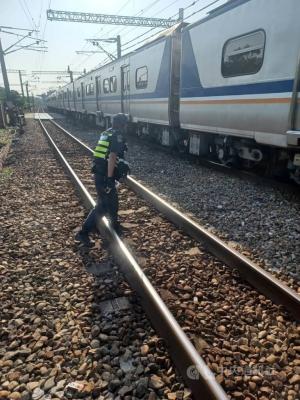More than 500 YouBike 2.0 docks have already been installed and another 250 are expected by the end of the year, with the goal of gradually replacing the YouBike 1.0 system, the Taipei City Government said on Tuesday, adding that old bikes would be given to neighborhood offices or auctioned online.
The city officially launched the upgraded system in May after a successful initial trial in the Gongguan (公關) area that started in January.
The bikes are solar-powered and have a card sensor, removing the need for large electrified stations to enable easy deployment.

Photo: Tsai Szu-pei, Taipei Times
The city plans to install 750 bicycle docks by the end of the year on its way to achieving its eventual goal of 1,200 docks.
YouBike 2.0 is expected to entirely replace its predecessor, which is incompatible with the new system and has 400 stations with about 13,000 bicycles spread throughout the city.
Unlike YouBike 1.0, the upgraded docks hold one bicycle each.
At a city council hearing, Taipei Department of Transportation Commissioner Chen Shyue-tair (陳學台) said that the department is on track to achieving its year-end goal, with about 500 docks already installed.
Taipei and now also New Taipei City are requiring that at least five YouBike 2.0 docks be installed near every YouBike 1.0 station by the end of the year, he said.
All 400 YouBike 1.0 stations would be maintained until next year, when usage would be assessed to determine whether removal is appropriate, he said, adding that the process would take about a year.
As for what to do with the old bikes once the replacement is completed, Chen said they would first be offered to neighborhood offices.
There are currently about 10,000 original YouBikes in use, many of which are approaching their five-year limit, he said.
Third-party professionals would first be sought to assess the safety and condition of the bikes, Chen said, adding that those suitable for use would be offered to local offices for public use.
The surplus would be offered to public offices outside of the city government for purchase, he said.
Whatever is left at that point would then be put up for auction on the city government’s auction Web site, Shwoo (惜物網), Chen added.

Taiwan would benefit from more integrated military strategies and deployments if the US and its allies treat the East China Sea, the Taiwan Strait and the South China Sea as a “single theater of operations,” a Taiwanese military expert said yesterday. Shen Ming-shih (沈明室), a researcher at the Institute for National Defense and Security Research, said he made the assessment after two Japanese military experts warned of emerging threats from China based on a drill conducted this month by the Chinese People’s Liberation Army’s (PLA) Eastern Theater Command. Japan Institute for National Fundamentals researcher Maki Nakagawa said the drill differed from the

‘WORSE THAN COMMUNISTS’: President William Lai has cracked down on his political enemies and has attempted to exterminate all opposition forces, the chairman said The legislature would motion for a presidential recall after May 20, Chinese Nationalist Party (KMT) Chairman Eric Chu (朱立倫) said yesterday at a protest themed “against green communists and dictatorship” in Taipei. Taiwan is supposed to be a peaceful homeland where people are united, but President William Lai (賴清德) has been polarizing and tearing apart society since his inauguration, Chu said. Lai must show his commitment to his job, otherwise a referendum could be initiated to recall him, he said. Democracy means the rule of the people, not the rule of the Democratic Progressive Party (DPP), but Lai has failed to fulfill his

A rally held by opposition parties yesterday demonstrates that Taiwan is a democratic country, President William Lai (賴清德) said yesterday, adding that if opposition parties really want to fight dictatorship, they should fight it on Tiananmen Square in Beijing. The Chinese Nationalist Party (KMT) held a protest with the theme “against green communists and dictatorship,” and was joined by the Taiwan People’s Party. Lai said the opposition parties are against what they called the “green communists,” but do not fight against the “Chinese communists,” adding that if they really want to fight dictatorship, they should go to the right place and face

A 79-year-old woman died today after being struck by a train at a level crossing in Taoyuan, police said. The woman, identified by her surname Wang (王), crossed the tracks even though the barriers were down in Jhongli District’s (中壢) Neili (內壢) area, the Taoyuan Branch of the Railway Police Bureau said. Surveillance footage showed that the railway barriers were lowered when Wang entered the crossing, but why she ventured onto the track remains under investigation, the police said. Police said they received a report of an incident at 6:41am involving local train No. 2133 that was heading from Keelung to Chiayi City. Investigators